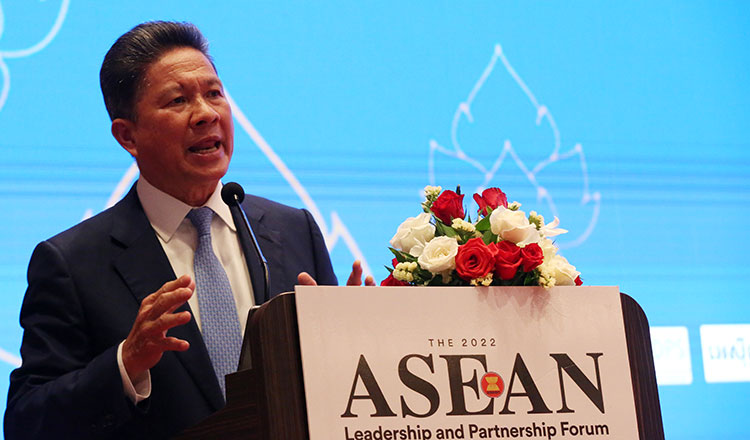‘ASEAN remains attractive investment destination’
Despite the adverse impacts of Covid-19, ASEAN remained an attractive investment destination, said Sun Chanthol, Senior Minister, Minister of Public Works and Transport.
While delivering a speech on ‘Enhancing ASEAN Transport Connectivity to promote regional trade and Investments’ at the ASEAN Leadership and Partnership Forum (ALPF) in Phnom Penh on Monday, the minister said, “According to ASEAN Investment Report 2020-2021, the past two years (2019 and 2020) were exceptional for ASEAN in terms of foreign direct investment (FDI).”
Quoting the report, the minister said ASEAN received the highest-ever FDI inflows of $182 billion in 2019 – making ASEAN the largest recipient of FDI in the developing world. The year 2020 saw the unprecedented impact of the COVID-19 pandemic, with a 25 per cent fall in FDI, to $137 billion.
“Despite the decline, ASEAN remained an attractive investment destination; the region’s share
of global FDI rose from 11.9 per cent in 2019 to 13.7 per cent in 2020,” he said.
Most industries other than those in the infrastructure and digital economy sectors saw a fall in FDI. Chanthol said FDI in manufacturing contracted by 55 per cent, from $49 billion in 2019 to $22 billion – a key contributor to the overall decline.
FDI also faltered in services such as finance, hospitality, tourism, real estate, and construction.
“Yet, investment rose in infrastructure-related sectors such as electricity, information and communication as well as transportation and storage – underscoring the resilience of these sectors in an economically challenging time,” the minister pointed out.
He said that since the pandemic, ASEAN Member States (AMS) have accelerated the push for investment in infrastructure, facilitated by ambitious national infrastructure plans, policy measures and greater opportunities for private sector participation.
“The infrastructure investment need in the region is estimated to be between $110 billion and $184 billion annually during 2015-2030,” the minister said.
According to the report of ASEAN Key Figures 2021, during the last two decades, ASEAN total merchandise trade has multiplied by almost 3.5 times, reaching over $2.6 trillion in 2020.
“Both exports and imports of goods showed an increasing trend until 2019. However, the Covid-19 pandemic has severely affected both exports and imports in 2020 resulting in an eight percent decline in total ASEAN merchandise trade compared to 2019,” he said.
The intra-ASEAN trade has continuously accounted for the largest share of ASEAN total trade. In 2020, intra-ASEAN trade accounted for 21.2 percent of total merchandise trade in
the region.
The minister pointed out that enhancing the ASEAN Transport Connectivity would help AMS to promote regional trade and investments.
“ASEAN Connectivity encompasses the physical, institutional, and people-to-people linkages that are critical in achieving the economic, political-security and socio-cultural pillars of an integrated ASEAN Community. Enhancing ASEAN Transport Connectivity would not only contribute to a more resilient and well-connected ASEAN, but also help AMS to promote regional trade and investments as well.”
On the significance of further enhancing land transport in the region, he said, “ASEAN has continued to improve its land transportation infrastructure network, with an 80 percent increase in total road length in the last decade equivalent to an annual average growth of 6.7 percent, from 1.4 million kilometres in 2010 to more than 2.5 million kilometres in 2020.”
Source: https://www.khmertimeskh.com/501150097/asean-remains-attractive-investment-destination/


 Thailand
Thailand




